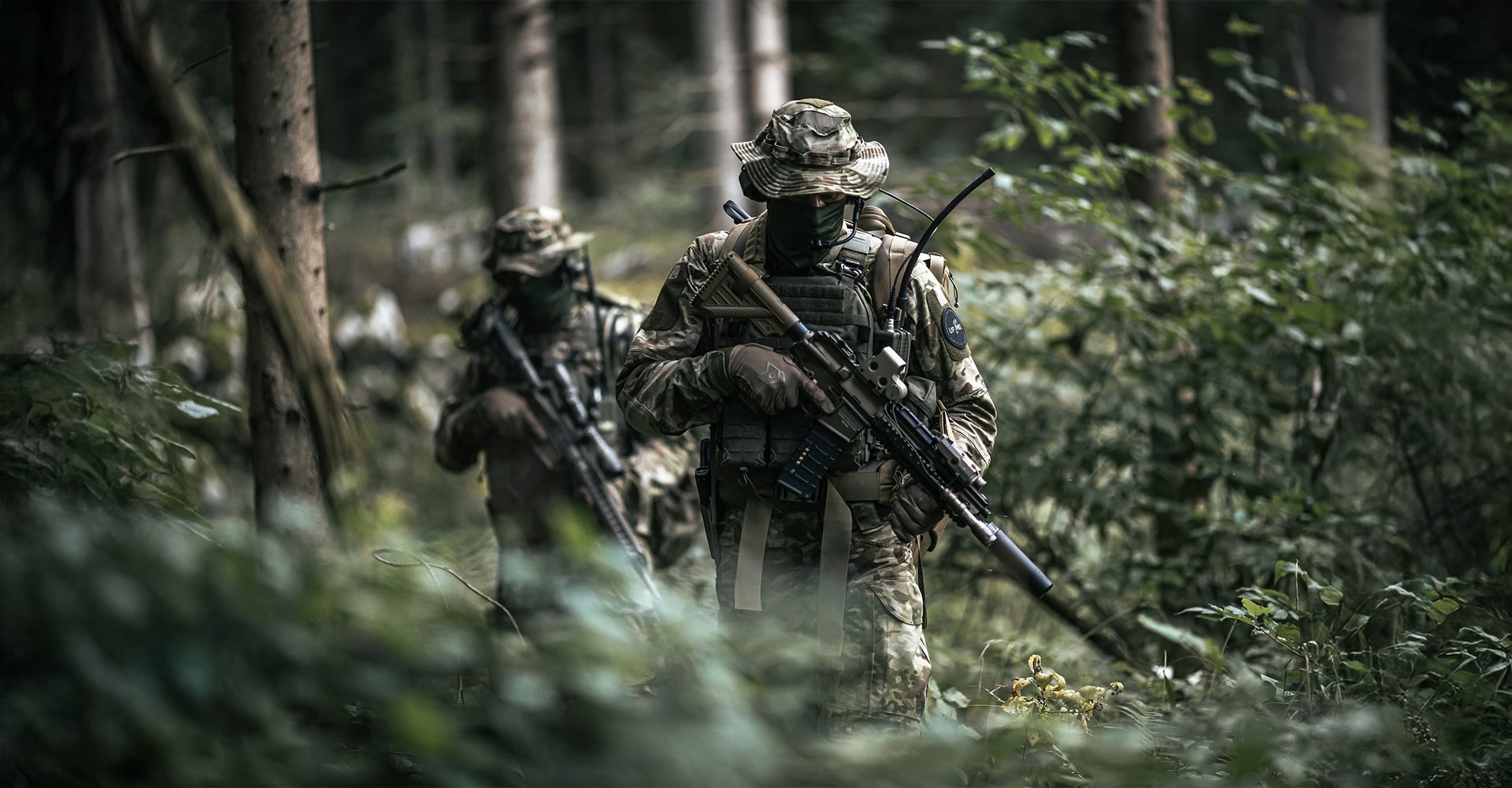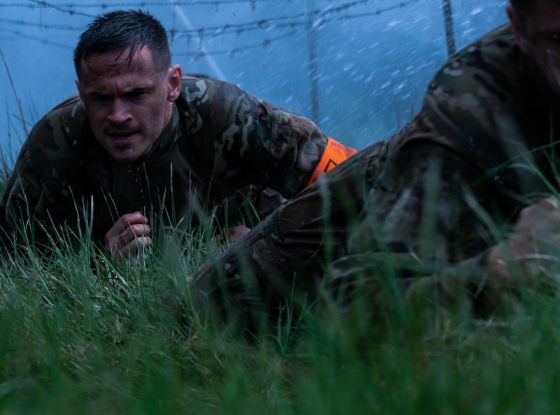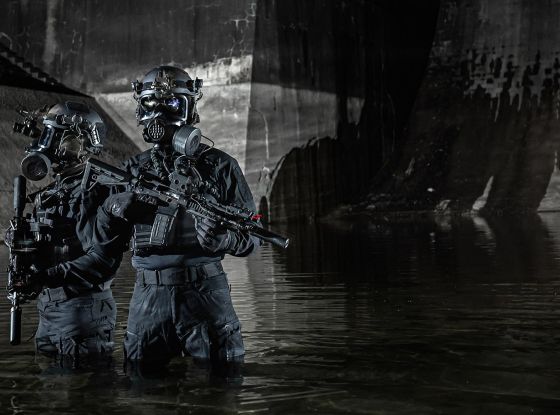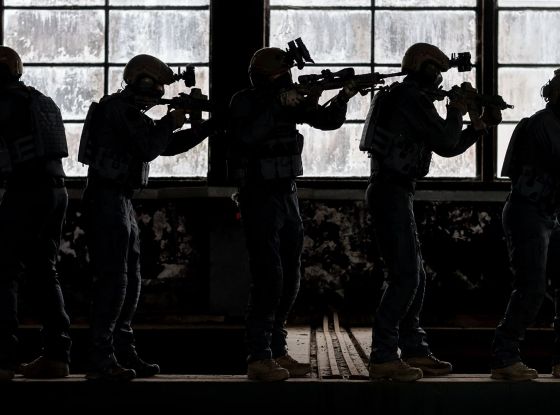After years of deployments in deserts, mountains, and arid regions, NATO special forces are entering a new chapter. The focus is shifting to cold, wet, and complex environments across Europe. With evolving security challenges and the need for greater standardization, special forces are adapting their training, tactics, and equipment for missions along NATO’s eastern flank and beyond. The operational demands are changing — and so are the solutions.
In this blog post:
- The Evolving Challenges of Western Special Forces Operations
- Radical Change and the New Geographical Focus
- European Special Forces: Adapting to a New Era of Conflict
- The Suwalki Gap and NATO’s Concerns
- Standardizing Equipment and Tactics Among NATO Special Forces
- Supporting Isolated Special Forces Units in A2/AD Zones
- New Special Forces Structure
- Conclusion
This analysis is brought by Soeren Suenkler, editor-in-chief of K-ISOM and a veteran of some of the world’s most complex Special Operations Forces environments. With decades of frontline experience and a deep network within SOF communities, Soeren provides a detailed and informed perspective on how NATO’s special forces are preparing for the future.
Author: Soeren Suenkler
The Evolving Challenges of Western Special Forces Operations
From 2001 onwards, Western special forces were confronted with the problem of stumbling relatively unprepared into a counter-terrorism scenario in Afghanistan for which they were neither properly equipped nor trained.
Special operations at altitudes over 5,000–6,000 m and heat waves exceeding 45°C presented major challenges to special forces units. Neither standard equipment nor training was suited to the extreme climate. Furthermore, Western special forces were sometimes deployed in the Hindu Kush in completely unfamiliar situations. Maritime US Navy SEALs operated in extremely challenging mountain ranges or vast deserts. In December 2001, Western special forces stormed the mountain fortress of Tora Bora. They had actually been trained for counterterrorism operations, not for mountain warfare in this specific form. In March 2003, Polish special forces from GROM secured the Iraqi port of Umm Qasr. Who spoke Arabic? Similarly, German Kampfschwimmer from the Naval Special Forces Command (KSM) deployed first to Afghanistan, then to Mali/Chad in Africa. Where was the sea?
These improvised special counterterrorism operations characterized two decades of mountain and desert warfare without sufficient preparation time, scenario training, or procurement of specific equipment. This was always done on an ad hoc basis and could never be properly planned over long periods. Ultimately, all procurement measures of this period are responsible for the current situation. Despite all the tactical successes of Western special forces at that time, the primary objective was never achieved. Nor was it ever realistically formulated by policymakers.
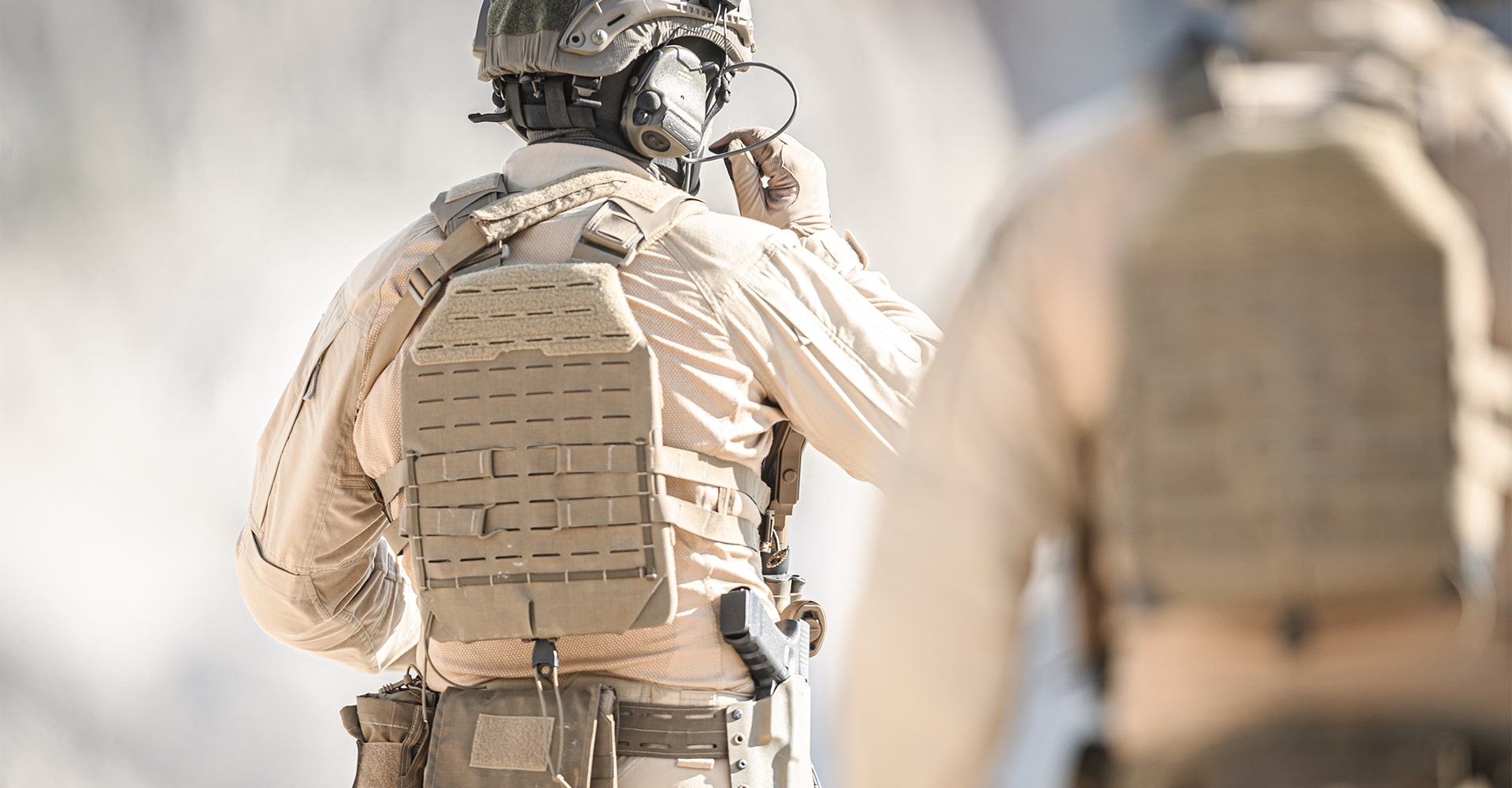
Non-unified leadership was also a massive problem. In some cases, Western special forces operated under different commands with different mandates. For many years, for example, there was a division in Afghanistan between the US-led Combined Joint Special Operations Task Force-Afghanistan (CJSOTF-A) in Operation "Enduring Freedom" (OEF), which consisted of at least six nations, and other Western special forces operating under the ISAF mandate or even under national restrictions. At the same time, in 2003, the Combined Joint Special Operations Task Force-Iraq began its special operations in Iraq under Operation "Iraqi Freedom" (OIF). Chaos, with excessive deployment in the operational area, personnel problems, structural weaknesses, and rotation conflicts, was thus inevitable and a lived reality.
The decoupling from the actual primary mission of many Western special forces even led to the de facto dissolution of the classic SAS-model structure of operational platoons specialized by deployment type and climate zones. For example, the German Kommando Spezialkräfte (KSK) no longer has standard mountain and arctic platoons, amphibious platoons, HALO/HAHO platoons, land/desert platoons, or sniper platoons in a KSK company. Today, all operators have been consolidated into just two assault platoons and one sniper platoon per company. All operators are now HALO/HAHO qualified. Climatic and infiltration specializations are now only found in teams scattered throughout the company. The increased qualification of HALO-/HAHO operators was made possible by the strict rationalization of parachute training.
Radical Change and the New Geographical Focus
The escalation of conflict in Eastern Europe in 2022, combined with the conclusion of special operations in Afghanistan, Iraq, and Africa, has ushered Western special forces into a completely new operational environment. The Hindu Kush, with its extreme heat and altitudes exceeding 7,000 meters, now belongs to the past. Doctrine, training, and equipment must be thoroughly reconfigured to meet current and future challenges.
The advantage, however, is that future operational areas can now be clearly defined geographically. As during the Cold War (1947–1989), the line of contact runs along an axis from north through Eastern Europe to the south. NATO divides these regions roughly into three zones. Scandinavia and the Baltic states belong to the northeast flank. Poland (formerly Germany) occupies a central position. The southern flank consists of countries in the Balkans and the Mediterranean region. Italy, Hungary, and Romania are key players there. In the north, Sweden and Finland joined NATO. The climatic and geographical key factors are known and predictable. Training, procurement, and operational doctrine can now be clearly derived from this.
In addition, NATO has defined long-term regional responsibilities. Western special forces therefore already know where their future operational areas will be. This simplifies training, procurement, and the allocation of responsibilities.
For example, the Federal Republic of Germany is involved in Lithuania and Romania. The USA is involved in Poland and Romania. The United Kingdom is involved in Poland and Estonia (Operation "Cabrit"). Canada is involved in Latvia (Operation "Reassurance"). These ties are long-term and involve partnerships and permanent deployments. This also includes the deployment of special forces, who now have to cope in a continental climate (cold and wet). Desert gear is now obsolete. Today, helmet and face camouflage are back in fashion, even for special forces.
The now obsolete international temporary special forces deployment structures from Afghanistan, Iraq, and Africa have been dissolved. The dominant factor today is NATO's Allied Special Operations Command in Belgium. This evolved from the NATO Special Operations Headquarters (NSHQ). The organization was founded at the Riga Summit as the NATO SOF Coordination Centre (NSCC). In 2009, the North Atlantic Council agreed to transfer the organization to the NSHQ effective March 1, 2010. This resulted in the new Allied Special Operations Command, which is not only responsible for doctrine, training, and standardization but also serves as the dominant framework for all European and Western NATO special forces, which are increasingly being consolidated under NATO (see SHAPE - Supreme Headquarters Allied Powers Europe).
For current deployments, especially US special forces of the Green Berets but also other US SOF, the US Special Operations Command Europe (US SOCEUR), based in Germany, is already very active in Eastern Europe and the Baltic states and takes on a "trip wire" and early warning role without going into specific details here.
SUBSCRIBE TO UNLOCK OUR EXCLUSIVE CONTENT
Enter your email and get timely updates and relevant intel on tactical topics directly to your inbox.
You are signing up to receive updates via e-mail from which you can opt out at any time. Visit our privacy policy for more info.
European Special Forces: Adapting to a New Era of Conflict
The war in Ukraine demonstrates the full spectrum of the "poor man's war" in the 21st century. Drone strikes, trench warfare, assault troops, surprise attacks, ambushes, close combat, and human-wave attacks are commonplace. Expensive and high-quality tanks are reduced to lone assault guns. Fighting for every single bunker is a lived reality. Endless artillery battles and counter-battery fire with massive ammunition consumption (80,000 rounds of artillery per day on the Russian side and up to 15,000 rounds per day on the Ukrainian side) are routine. Special forces deployed behind enemy lines, scorched earth everywhere, and over 1,000 casualties per day paint a grim picture. A bilateral Anti-Access Area Denial (A2/AD) strategy looms, making the use of air power on either side almost impossible. For the Ukrainian special forces deployed in combat, the exhausting daily routine consists of surprise attacks, raids, ambushes, drone strikes, assaults, and repelling enemy incursions. Their own losses are high, while attackers’ losses are three times greater.
For Western special forces, this new situation demands a new orientation to these realities. They can now plan their operations and anticipate their geographical location. The Suwalki Gap is known. The Baltic Sea is also a known factor. The Donbas and the Sea of Azov are already battlegrounds.
However, hardly any movement in this region goes undetected. In this highly non-permissive environment and under the A2/AD umbrella, it teems with visual and electronic reconnaissance (SIGINT, ELINT, HUMINT, COMINT, etc.) using all kinds of state-of-the-art means. Countermeasures, jamming, and Electronic Warfare (EW) complete the complex picture.
Western special forces can operate only to a limited extent in this environment without being immediately detected. Their current mission is limited to two of the three main missions defined by NATO:
- Special Reconnaissance (SR),
- Military Assistance (MA).
The conduct of direct combat operations (Direct Action) can neither be confirmed nor denied at this time. Policymakers remain extremely cautious. However, Western special forces are now finally operating in their true and original role as enablers and spearheads. They serve as enablers for larger NATO formations and for large-scale conventional operations, and, above all, as a "tripwire." In the case of a NATO emergency under Section § 5, Western special forces are intended to buy NATO the urgently needed time for mobilization and relocation of Western forces to the contact line in the east.
This "tripwire" tactic is already being implemented. Western special forces are training and assisting partner countries in Eastern Europe. In doing so, they are establishing connections and partnerships with local special forces and Homeguard units. Networks are also being formed that could serve as the basis for a partisan/resistance movement in the future. A coordinating factor in this is the US Special Operations Command Europe (SOCEUR), with its new doctrines and guidelines for special operations along the contact line as well as in enemy-occupied NATO territory (see Special Operations Exercise "Trojan Footprint"). The idea behind this draws on past Western covert support for the Baltic "Forest Brothers" in the 1950s, as well as the "Jedburgh" concept of the Allied US OSS (Office of Strategic Services) and UK SOE (Special Operations Executive) during World War II. The general situation is not new, merely 80 years later.
Adapting to emerging challenges requires evolving training methods and strategies, as outlined in the blog on the future of special operations forces training.
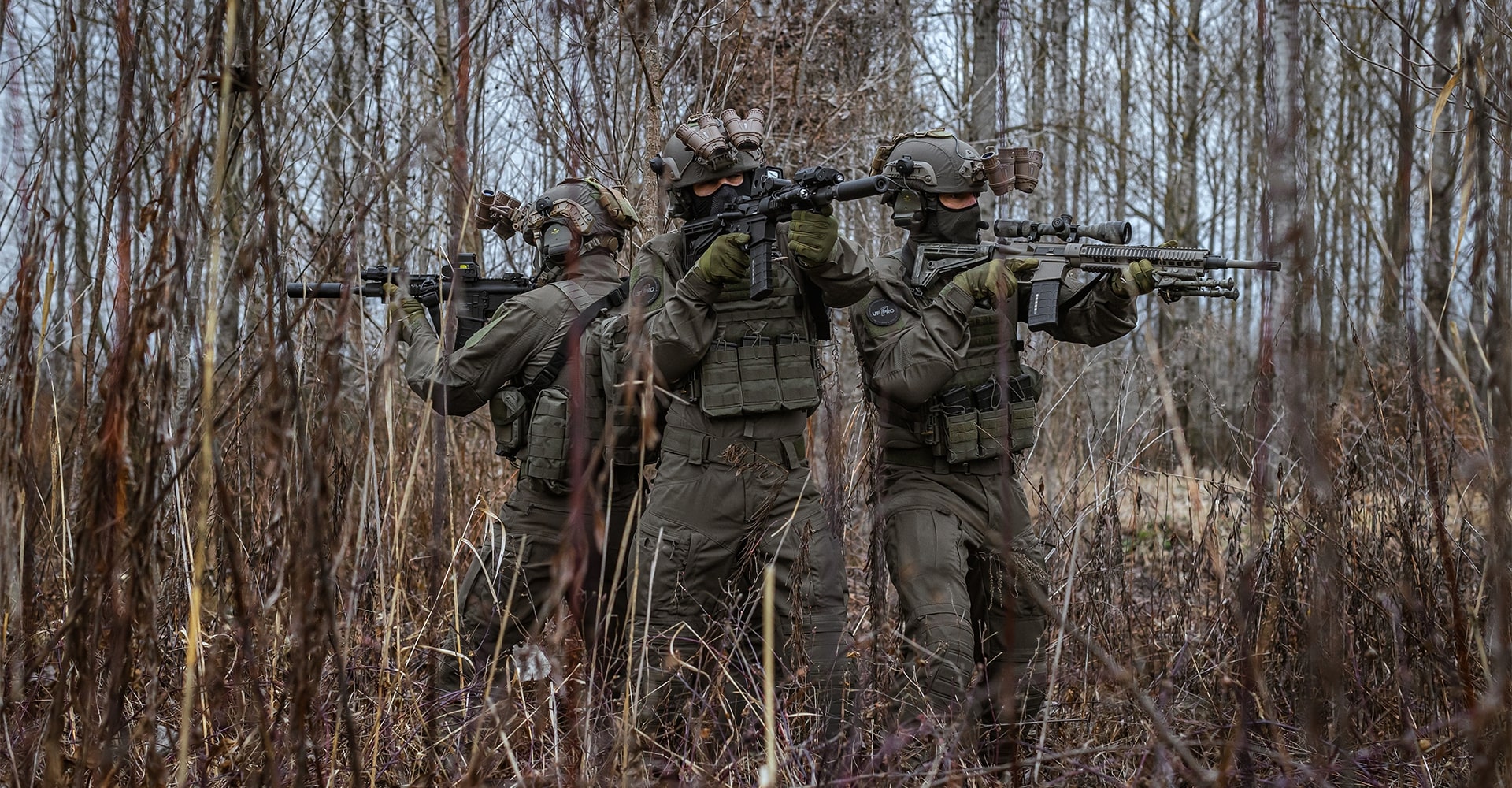
The Suwalki Gap and NATO’s Concerns
The infamous Suwalki Gap is causing NATO major headaches. In NATO terminology, the Suwalki Gap refers to the sparsely populated area around the border between Lithuania and Poland, which represents a bottleneck in the land connection between the Baltic states and other NATO partners. At the same time, the territory of the Russian exclave of Kaliningrad (EW and A2/AD focus) is located closest to Belarus. Named after the Polish city of Suwalki, it poses problems for NATO. Security studies describe the area as NATO's most fragile and estimate that, in the event of a Russian attack, NATO would only be able to ensure supplies via the corridor for 36 to 60 hours until the Baltic capitals are occupied and the Baltic states are isolated. In March 2023, it was reported that Poland was securing its border installations at the Suwalki Gap with tank obstacles.
Accordingly, one must reckon with the high probability that, under certain circumstances, the Baltic states could be cut off from the rest of NATO in the event of a conflict. Western special forces operating on the ground would then have to go underground together with the local resistance movement and from there take up the fight against the occupying forces. A stay-behind network would also go into action. This would be possible even in the cold, wet Baltic winter under partly Scandinavian conditions. That's the theory.
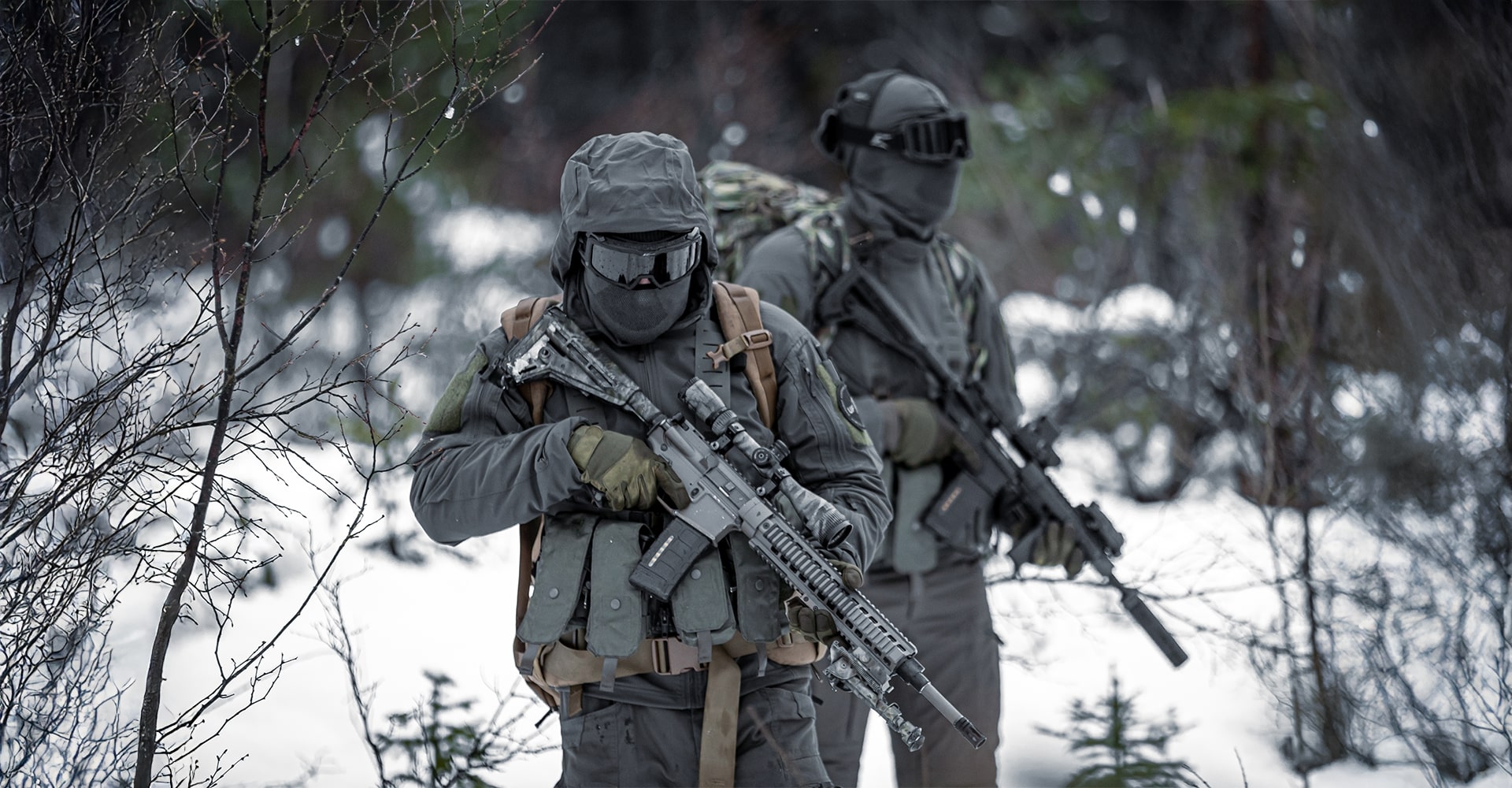
Preparations already underway for such a scenario include the creation of improvised runways and strips on straight, well-paved motorways for military aircraft takeoff and landing. For example, during "Saber Strike" 2018, the US Air Force trained A-10 "Thunderbolts" II ground attack aircraft in Estonia, with US Air Force Special Tactics personnel from AFSOC on the ground, practicing STOL procedures on civilian roads (Short Take-Off and Landing). These were also preplanned and trained in Germany until 1989 (motorways such as parts of the A1 or A29, a total of 24 emergency landing strips).
Standardizing Equipment and Tactics Among NATO Special Forces
One significant consequence of deployments in Afghanistan was the controversial phase-out of the German HK G36 in 5.56 mm x 45 within the Bundeswehr’s armament concept — a decision that also affected German special forces. This otherwise well-designed weapon had been introduced during conscription reforms aimed at reducing training time and resources, marking a shift from 7.62 mm x 51 (HK G3) to a new NATO caliber. The HK G36 was intended to provide conscripts with a higher first-hit probability while halving training time. Additionally, it was lightweight and cost-effective, meeting these requirements successfully and entering series production in 1997.
Now, the HK416 — also known as the G95 and likewise chambered in 5.56 mm x 45 — is replacing the G36 across all Bundeswehr branches and German special forces. As the HK416 has become the new NATO standard (adopted by Germany, Norway, France, Spain special forces, Luxembourg, the US, and others), this shift supports greater standardization. The result is alignment in training, spare parts, mission compatibility, supply chains, and operational concepts. The focus is no longer on individual solutions for national needs, but on NATO-wide uniformity for both conventional troops and special forces. The HK416, in its variants, is designed not only for hot and dry climates, but also for over-the-beach operations (e.g., Baltic coast) and cold, wet winters in Eastern Europe.
This philosophy of interoperability extends beyond firepower. European airborne and special forces units — including Dutch, Austrian, German, Swiss, and Polish formations — are standardizing on similar Special Operations Vehicles (SOVs) and airborne platforms, such as the "Caracal." Germany and the Netherlands alone are jointly acquiring over 3,000 Caracal vehicles. These common standards simplify procurement, training, maintenance, deployment, and supply within NATO. (Note: Austria and Switzerland are not NATO members.)
Further, standardization also applies to clothing systems. The focus is increasingly on functional, mission-adapted solutions capable of handling the demands of NATO’s diverse climate zones — from cold, wet northern regions to temperate and Mediterranean environments. While MultiCam variations have become widely adopted across many special forces units for interoperability, individual nations continue to refine their approaches. Notably, German special forces are once again setting themselves apart with the newly introduced Multitarn pattern — a five-color "Flecktarn" blended with MultiCam tones — developed after extensive research to meet unique operational requirements.

Supporting Isolated Special Forces Units in A2/AD Zones
The new situation on the eastern flank inevitably implies that, in a future conflict, our own units or subunits will be trapped and not directly accessible. These units will likely be within the sphere of influence of an enemy A2/AD dome. Thus, they will be inaccessible or almost impossible to reach by regular supply flights. Extensive helicopter operations like those in Afghanistan will be virtually impossible. The Western alliance can only operate in areas where at least temporary air superiority has been established.
Therefore, it is important to consider how isolated units, stay-behind organizations, NATO special forces-led partner units, underground and resistance organizations, and nearly self-sufficient Homeguard units can be supplied.
This is done with drones and gliders. The US Air Force has already partially introduced DZYNE's "Grasshopper" gliding system for this purpose. This low-cost glider is a GPS-guided, silent cargo glider for high-risk supply missions by AFSOC (US Air Force Special Operations Command) and can safely transport approximately 220 kg of supplies into a "hot zone." The "Grasshopper" can be deployed from the ramp of a C-17 or a C-130. The glider system reaches speeds of approximately 175 km/h and has a minimal signature. According to the manufacturer, the penetration depth is "...dozens of miles." The control system is secured so the glider reaches its target safely even without a GPS signal. Landing is carried out using a built-in drogue parachute.
Additionally, "Silent Arrow" GD-2000 cargo gliders are being procured for US SOCOM, primarily to supply Green Berets in operations where helicopters and C-130 transport aircraft cannot land or drop pallets (the common A2/AD problem). The GD-2000 can land accurately within a 100 m radius. The range is stated to be over 60 km. The maximum payload is approximately 740 kg.
Cargo drones and gliders have such a reduced signature that they are barely detected in airspace, offering a certain degree of penetration. However, if a supply flight goes lost, it would not be a major problem and could be quickly replaced. Deployed in large numbers and well coordinated, drones and gliders could ensure resupply for several weeks until secure air and land connections to the cut-off units are restored. This scenario is conceivable for the Baltic states, Scandinavia, and NATO’s southeastern flank.
New Special Forces Structure
While in Afghanistan and Iraq so-called haphazardly assembled Combined Joint Special Operations Task Forces of varying composition, strength, and tasks were deployed, in the new NATO era a degree of standardization is being promoted. Today, NATO countries are required to set up and train standardized Special Operations Task Groups (SOTG) for land and maritime operations and to make them available to NATO in precisely defined structures. These define personnel strength, function, and capabilities. This results in Special Operations Task Groups (land) and Maritime Special Operations Task Groups as well as Special Operations Rotary / Fixed Wings.
When placed under NATO control, these are identical for almost all nations and guarantee standardized standards over a long period. Operational zones include the Baltic and Black Seas, Scandinavia, the Baltic states, and NATO's southeastern flank with Mediterranean climate zones. One challenge will be the cold, wet, and snowy northern climate zones.
NATO special forces operate in some of the most demanding environments and missions — discover what makes special forces so special in this detailed blog post.
Conclusion
The era of improvised and nationally unique special forces solutions is ending. Instead, NATO special forces will increasingly rely on standardized training, equipment, and operations to meet the challenges of the evolving security landscape. This shift applies not only to special forces but also to conventional troops. While specialized missions in vast deserts, high mountains, and dense jungles will still take place, they will be the exception rather than the rule. Fighting insurgents and terrorists will remain important but will only constitute part of the broader mission.

